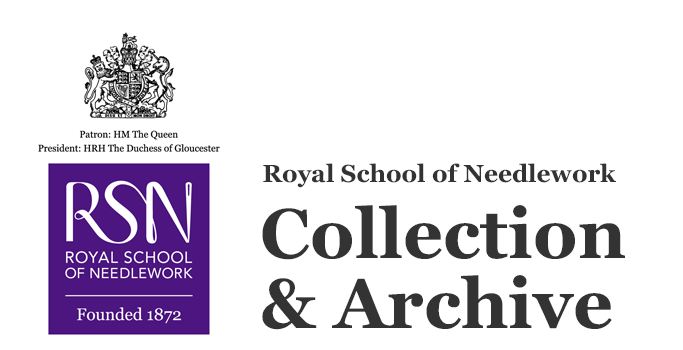Tracing
Level of description
Item
Extent and medium
Dimensions: 175mm X 225mm
Creator
Scope and content
Pencil on tracing paper showing 3 designs (or sections of designs) in the style of Jacobean crewelwork. Top, larger, and bottom left designs shows curling leaves and flowers including acorns, bottom left also includes a rabbit and a stag or deer.
The Royal School of Art Needlework (later the Royal School of Needlework) like much of the Arts and Crafts and Aesthetics movements was heavily influenced by historical examples of design and in this case of needlework. Many of the organisations founding members were collectors of historic needlework and they also had close links to the newly established South Kensington Museum (later the V&A) and the Artists Committee (comprised initially of Fredrick Leighton, GF Bodley and Val Princep) who advised on matters of design, actively encouraged students and employees in the Paintroom to copy and study old examples of good quality.
Crewelwork was a very popular method of decorating domestic textiles in the 16th, 17th, and 18th centuries. In the late 17th and early 18th centuries, many crewelwork designs were inspired by the 'Tree of Life' motif present on painted Indian palampores which were being imported into Britain. These crewelwork embroideries exhibited curling vines, large leaves in a variety of shapes, and, sometimes, flowers, with the 'tree' emanating from a base as seen in the bottom right hand design.
The Royal School of Art Needlework (later the Royal School of Needlework) like much of the Arts and Crafts and Aesthetics movements was heavily influenced by historical examples of design and in this case of needlework. Many of the organisations founding members were collectors of historic needlework and they also had close links to the newly established South Kensington Museum (later the V&A) and the Artists Committee (comprised initially of Fredrick Leighton, GF Bodley and Val Princep) who advised on matters of design, actively encouraged students and employees in the Paintroom to copy and study old examples of good quality.
Crewelwork was a very popular method of decorating domestic textiles in the 16th, 17th, and 18th centuries. In the late 17th and early 18th centuries, many crewelwork designs were inspired by the 'Tree of Life' motif present on painted Indian palampores which were being imported into Britain. These crewelwork embroideries exhibited curling vines, large leaves in a variety of shapes, and, sometimes, flowers, with the 'tree' emanating from a base as seen in the bottom right hand design.
Reference code
D1/097
© Royal School of Needlework
